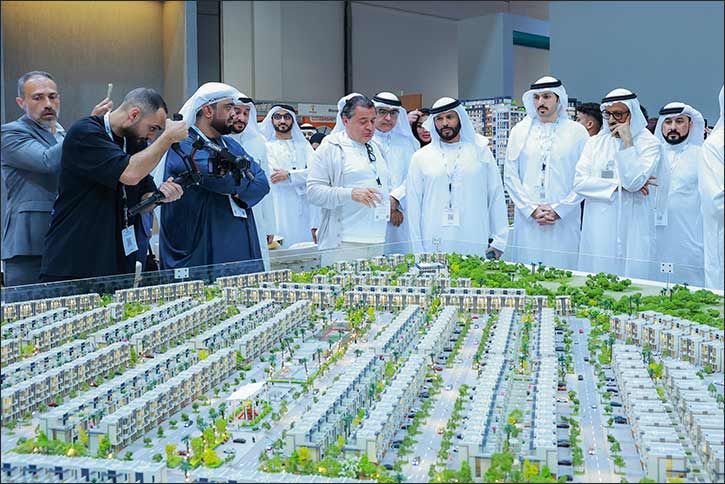By Naji Haddad, Middle East General Manager at Deliverect
The food and beverage sector is in a pivotal moment of change and digitalisation, with delivery becoming vital for long-time survival. The past year has seen the food delivery industry boom. We saw this come to life when we found ourselves at Deliverect helping to process more than 1.5 million orders per week in the last year – a 750% increase from the year before.
Even more staggering: the global online food delivery market was worth $7 billion in 2020 and increased to $126.91 billion in 2021. The market is expected to reach $192.16 billion in 2025,1 so it’s safe to say that online food delivery is only just getting started and will continue to grow.
Today, restaurants are looking for ways to thrive in the ‘new normal,’ which includes lots more orders and delivery options. Restaurant owners are looking for ways to sell more easily and to reach more customers with less hassle. With an ever changing external landscape, restaurateurs need a solutions-based approach to help their restaurants digitise, streamline and manage their sales in order to thrive in the online space and to effectively manage and grow business.
Here are some trends that will dominate hospitality’s food and beverage sector in 2022:
Direct to Consumer
Restaurants have had to rely on external channels (e.g. 3rd party marketers, societal trends) for consumer insights, but in 2022 restaurants will take more ownership, using their own direct channels to sell online and dispatch (e.g. use of omni-channel technology, such as: online app ordering, to track and observe delivery order records), in order to gain a better understanding of their consumers’ preferences.
Not only will restaurants sell more through their own delivery channels – they may also manage the delivery themselves with services like dispatch. The result will be a more connected customer experience that will satisfy the consumer’s need for personalization, which will increase revenue for businesses.
Smart Dining
Much of the restaurant industry has and will continue to invest in in-store tech. Many have gone toward contactless payment solutions through the use of QR codes and/or tableside ordering technology to minimize customer contact with restaurant workers. Operators are also experimenting with cutting-edge air filtration and surface cleaning technologies to make diners more comfortable when sharing space with a crowd. Smarter tech that have artificial intelligence, such as robots, will be used for restaurant food delivery.
Sustainability
Inefficiency within the delivery process contributes to the food waste crisis. Deliverect helps restaurants reduce order error by almost 80%, which leads to less food wastage (as well as less lost revenue on refunds for our customers). Beyond this, we provide all partners with resources for sustainable suppliers to help them along their journey. More environmentally friendly packaging is being introduced to restaurants and food delivery channels and will continue to be a major priority in 2022.
The Great Resignation
There are many vacant positions across the region as hospitality firms compete with retailers and delivery businesses for staff. Covid has been the primary driving force behind the industry’s labour crisis. There currently is and unfortunately will continue to be a challenge with maintaining healthy retention levels of staff working across the hospitality industry.
Recruitment of new staff members will also be a struggle, with the rising number of unfulfilled hospitality job vacancies. To help combat this, we recommend restaurants have strong recruitment/employee recommendation programs in place, so that positions can be filled quickly when needed.
Restaurants Built For Food Delivery
There is immense pressure on restaurants to keep up with the increasing demand of food delivery orders, whilst still having to cater and serve in-person diners. The restaurant of the future will be built with two doors – one door for in-person customers and one for riders to come in and pick up orders, without having to disturb the customers.
Food delivery boxes will also be collected from an outside window, a bit like a fast food drive-thru. This way, riders can pick up without having to physically step foot in the restaurants, which is the current setup with some fast-food chains.
Optimising Profit
Starting now – and likely into the years to come – there will continue to be a valiant effort to optimise profit in order to help revive the hospitality industry and its contribution to the economy. 2022 will see more restaurants incorporate review management within their business model, in order to closely monitor profit levels and how to best increase profits (if levels are flagging).
In order to optimise and therefore increase profit levels, businesses need to increase customer retention and conversion levels. For this reason, there will be a rapid increase in the frequentness of promotions and discounts at all times of the year, not just on social calendar events.
Marketing Becoming an Integral Part of a Business Strategy
Restaurants need to make their brands stand out from the crowd by ensuring their website and social media channels are up-to-date, as well as having an easily accessible menu that includes enticing pictures and so on.
Upgrading The Customer Experience
Restaurants will continue to introduce digital menus available through WiFi or QR codes to help cater for a contactless customer experience. Digital menus are an upgrade for customers: they make for a faster/more efficient (and more sanitary!) dining experience because customers can order and pay for their meal on a tablet instead of relying on usually busy waiting staff. Further, instead of the waiting staff randomly checking on guests to ask about refills, customers can order right from the table.
Overall in 2022, we will see the wider food and restaurant industry evolving with an even greater focus on technology. We will also see the food delivery sector become an increasingly crucial factor in the survival of food & beverage hospitality. Tech allows the sector to expand its reach and it provides a flowing stream of revenue. Consumers’ habits have permanently changed, with a greater preference for convenience and eating at home, and businesses need to adapt accordingly. May the hospitality industry not only continue to survive, but also thrive in 2022 and beyond!















